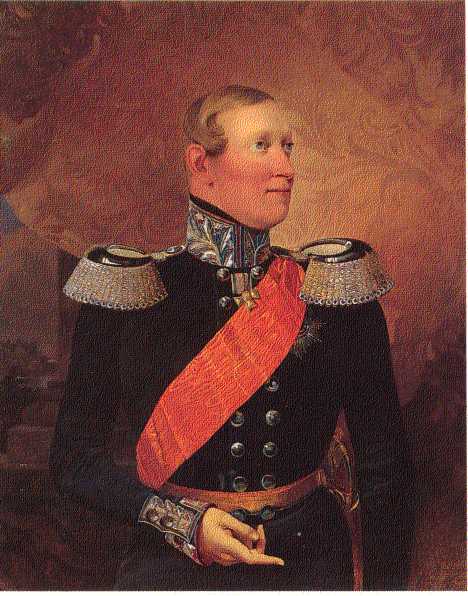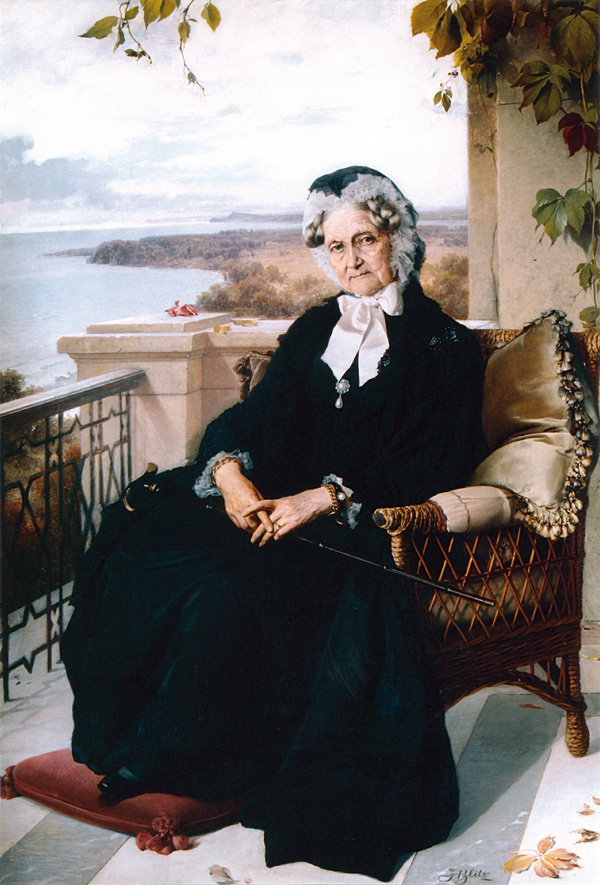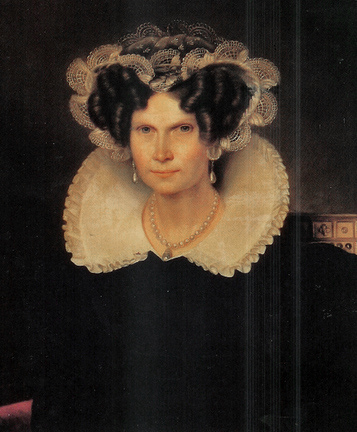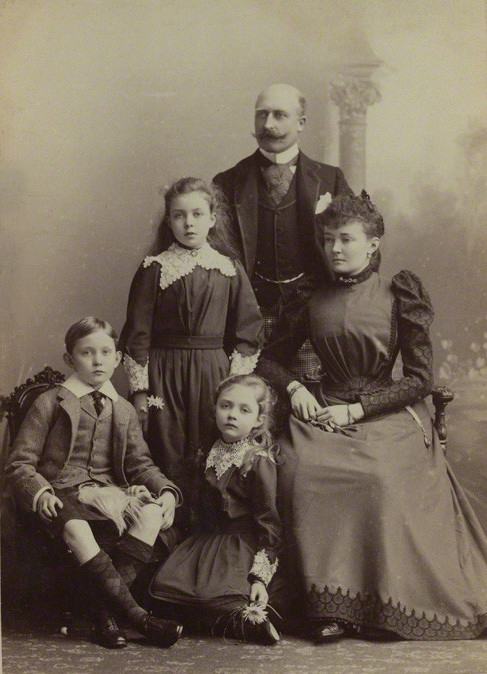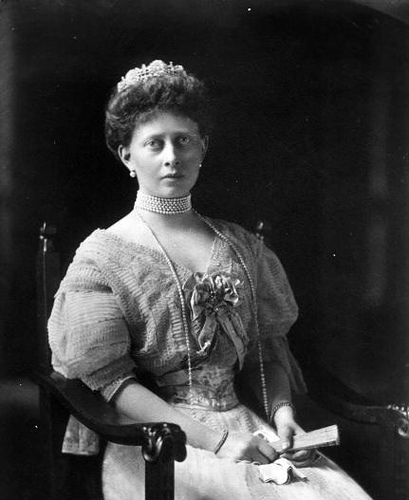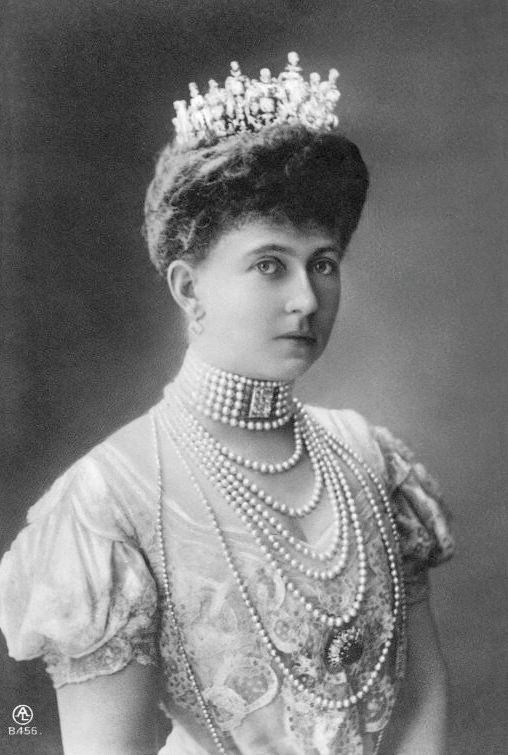by Susan Flantzer © Unofficial Royalty 2016

by Lorens Pasch the Younger; Credit – Wikipedia
Princess Louisa Ulrika of Prussia was born on July 24, 1720, in Berlin, Kingdom of Prussia, now in the German state of Brandenburg. She was the fifth daughter and the tenth of the fourteen children of King Friedrich Wilhelm I of Prussia and his wife Sophia Dorothea of Hanover, daughter of King George I of Great Britain and the only sibling of King George II of Great Britain.
Louisa Ulrike had thirteen siblings:
- Friedrich Ludwig of Prussia (1707 – 1708), died in infancy
- Friederike Wilhelmine of Prussia (1709 – 1758), married Friedrich, Margrave of Brandenburg-Bayreuth, had issue
- Friedrich Wilhelm of Prussia (1710 – 1711), died in infancy
- Friedrich II the Great, King of Prussia (1712 – 1786), married Elisabeth Christine of Brunswick-Wolfenbüttel-Bevern, no issue
- Charlotte Albertine of Prussia (1713 – 1714), died in infancy
- Friederike Luise of Prussia (1714 – 1784), married Karl Wilhelm Friedrich, Margrave of Brandenburg-Ansbach, had issue
- Philippine Charlotte of Prussia,(1716 – 1801), married Karl I, Duke of Brunswick-Wolfenbüttel, had issue
- Ludwig Karl Wilhelm of Prussia (1717 – 1719), died in early childhood
- Sophia Dorothea of Prussia (1719 – 1765), married Friedrich Wilhelm, Margrave of Brandenburg-Schwedt, had issue
- August Wilhelm of Prussia (1722 – 1758), married Luise of Brunswick-Wolfenbüttel, had issue including King Friedrich Wilhelm II of Prussia and Wilhelmina of Prussia who married William V, Prince of Orange
- Anna Amalia of Prussia, Abbess of Quedlinburg (1723 – 1787), unmarried
- Friedrich Heinrich Ludwig of Prussia (1726 – 1802), married Wilhelmina of Hesse-Kassel, no issue
- August Ferdinand of Prussia (1730 – 1813), married Elisabeth Louise of Brandenburg-Schwedt, had issue

Louisa Ulrika’s brothers: left to right Friedrich, August Ferdinand, August Wilhelm and Heinrich by Francesco Carlo Rusca, 1737; Credit – Wikipedia
Louisa Ulrika received an education as befitted a princess of the Age of Enlightenment and saw nothing wrong with the militaristic views of her father unlike her elder brother and her father’s successor, the future King Friedrich “the Great” II, and her elder sisters. Influenced by her mother, Louisa Ulrika shared a common interest in science and culture with her brother Friedrich. Several royal suitors sought her hand in marriage including her first cousin Frederick, Prince of Wales; King Carlos III of Spain, and Louis IX, Landgrave of Hesse-Darmstadt.
In 1743, an election was held to appoint an heir to the childless King Fredrik I of Sweden, and Adolf Fredrik of Holstein-Gottorp won the election. The powers that be decided that either Louisa Ulrika and her youngest sister Anna Amalia would be married to the future King of Sweden. The Swedish ambassador to Prussia inspected both sisters and recommended Louisa Ulrika. The sisters’ brother Friedrich, who had succeeded to the Prussia throne in 1740, described Louisa Ulrika as arrogant and divisive and recommended Anna Amalia, described as kind-hearted and more suitable. Friedrich’s real reason for recommending Anna Amalia is that he wanted a sister who would gain influence in Sweden and considered his youngest sister to be more manageable. After getting the opinion of the groom Adolf Fredrik, the Swedish government insisted on Louisa Ulrika and King Friedrich II of Prussia gave his approval. Louisa Ulrika was taught about Sweden, converted to Lutheranism, and was advised to refrain from any involvement in politics.
On July 17, 1744, Louisa Ulrika and Adolf Fredrik were married by proxy in Berlin with the bride’s brother August Wilhelm standing in for the groom. Louisa Ulrika was escorted to Sweden by the Swedish ambassador and his wife. On August 18, 1744, she was welcomed by King Fredrik I at Drottningholm Palace in Sweden, where the second wedding ceremony was held the same day, followed by a ball and a court reception.
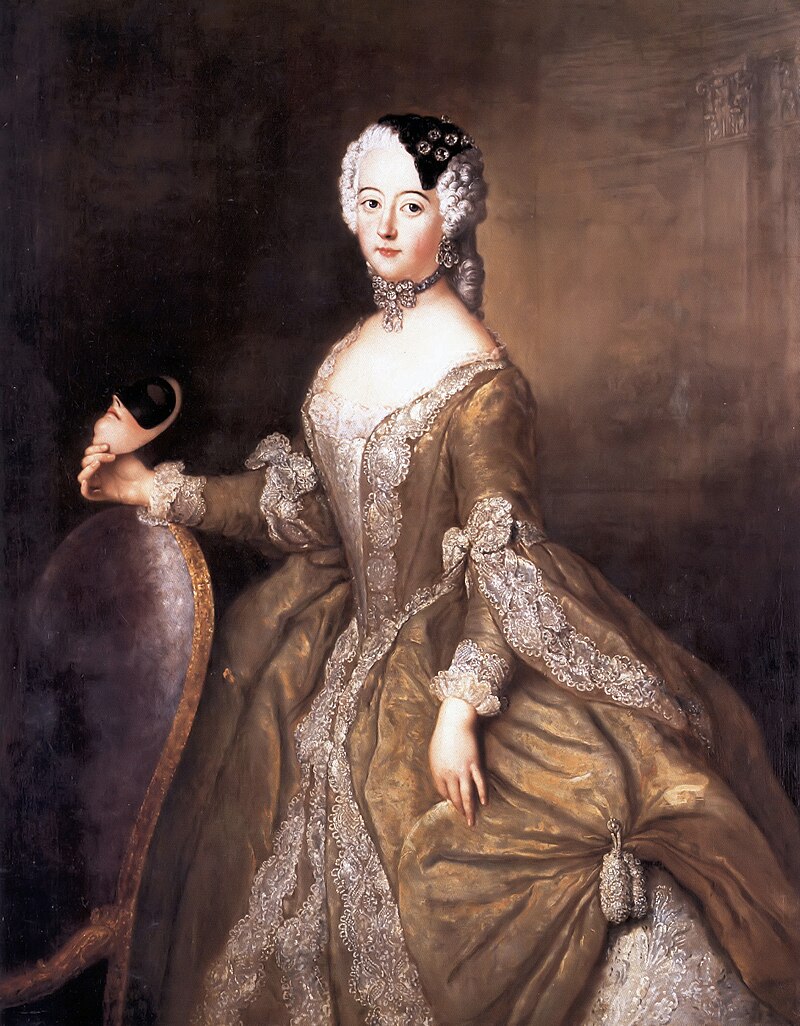
Louisa Ulrika by Antoine Pesne, circa 1744; Credit – Wikipedia
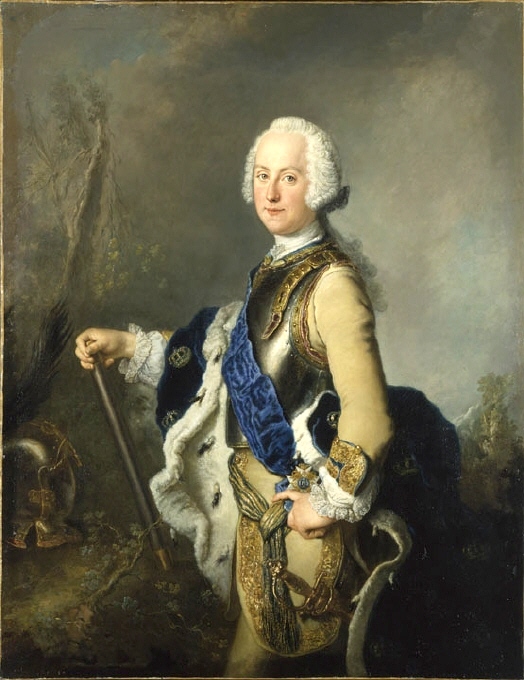
King Adolf Fredrik of Sweden by Antoine Pesne; Credit – Wikipedia
Following a stillbirth, Louisa Ulrika and Adolf Fredrik had four children:
Adolf Fredrik was introverted, gentle, and submissive, and Louisa Ulrika was pleased with him because she immediately felt secure in the fact that she was his superior. Already during their first day together, she was meddling in politics, informing Adolf Fredrik that her brother Friedrich had plans for an alliance between Sweden, Russia, and Prussia, and asked Adolf Fredrik to raise the subject with the Prussian envoy, which he agreed to do. No children had been born to the Swedish royal family in over 50 years, so when Louisa Ulrika’s first child was born in 1746, she was seen as the salvation of a succession crisis. Eventually, Louisa Ulrika gave birth to three sons, two of whom became Kings of Sweden.

The three sons of Louisa Ulrika: King Gustav III of Sweden, Prince Frederick Adolf and King Carl XIII of Sweden by Alexander Roslin, 1771; Credit – Wikipedia
Upon her wedding in 1744, King Fredrik I gave Louisa Ulrika the ownership of Drottningholm Palace, not too far from the Swedish capital of Stockholm. During Louisa Ulrika’s ownership of Drottningholm Palace, the interior of the palace was redecorated in a more sophisticated French rococo style. On Louisa Ulrika’s 33rd birthday, Adolf Fredrik presented her with the Chinese Pavillion, located on the grounds of Drottningholm Palace. In a letter to her mother, Louisa Ulrika wrote: “He brought me to one side of the garden and I was surprised to suddenly be part of a fairy tale, for the King had built a Chinese castle, the most beautiful one can see.” Louisa Ulrika was also responsible for having the Drottningholm Palace Theatre rebuilt after the original building burned down in 1762. Louisa Ulrika encouraged the leading scientists of the time to gather at Drottningholm Palace. The famous Swedish botanist Carl Linnaeus worked there, cataloging the royal collections’ natural objects. Louisa Ulrika and Adolf Fredrik continued to reside at the palace during their reign (1751–1771). In 1777, Louisa Ulrika sold Drottningholm Palace to the Swedish state. Currently, it is the home of the Swedish Royal Family.

Drottningholm Palace; Photo Credit – Susan Flantzer, August 2011

Chinese Pavillon; Photo Credit – Susan Flantzer, August 2011
On March 25, 1751, Louisa Ulrika’s husband succeeded to the Swedish throne. During his twenty-year reign, Adolf Fredrik had no real power. The Riksdag (Swedish Parliament) held the power. Adolf Fredrik tried to change this twice, unsuccessfully. King Adolf Fredrik died on February 12, 1771, after eating an extremely large meal. In Sweden, he is remembered as “the king who ate himself to death.”
In 1751, shortly after Adolf Fredrik became king, a betrothal was arranged between two five-year-olds Crown Prince Gustav of Sweden and Princess Sophia Magdalena of Denmark, daughter of King Frederik V of Denmark and his first wife Princess Louisa of Great Britain, daughter of King George II of Great Britain. The betrothal’s purpose was to foster friendship between the two countries and was arranged by the Swedish parliament, not the Danish and Swedish royal families. The proposed match was disliked by both mothers. Gustav’s mother, Louisa Ulrika had long been in conflict with the Swedish parliament and would have preferred a marriage with one of her nieces. Sophia Magdalena’s mother feared that her daughter would be mistreated by Louisa Ulrika. The couple married in 1766, and Queen Louise’s fear came true as her daughter Sophia Magdalena was harassed by Louisa Ulrika after the marriage.
After her husband’s death, Louisa Ulrika had difficulty with her new role as Queen Mother. Her relationship with her son, now King Gustav III, worsened when she finally realized that he did not want to let her be the power behind the throne. In 1777-1778, a scandal broke out regarding the legitimacy of Crown Prince Gustav Adolf when King Gustav III’s younger brothers claimed that the Crown Prince was a result of an affair between Sophia Magdalena and Count Adolf Fredrik Munck af Fulkila. The marriage of Sophia Magdalena and Gustav had remained unconsummated for ten years. There were various theories regarding the cause including Sophia Magdalena’s strict religious upbringing and introverted character, Gustav’s sexuality, and the possibility that either or both Sophia Magdalena and Gustav had some kind of physical problem. Eventually, Count Adolf Fredrik Munck af Fulkila acted as a sexual instructor for the couple and Crown Prince Gustav Adolf was born. Louisa Ulrika accused her son of having another man father his child. A great scandal erupted, during which the king threatened to exile his mother. Eventually, Louisa Ulrika was forced to make a formal statement withdrawing her accusation. She was banned from the court and spent the remainder of her life at Fredrikshof Palace and Svartsjö Palace.

Louisa Ulrika by Alexander Roslin, 1775; Credit – Wikipedia
In the spring of 1782, Louisa Ulrika became ill during an influenza epidemic. After mediation by her daughter-in-law Hedwig Elizabeth Charlotte (wife of her son Carl), Louisa Ulrika and her son King Gustav III finally reconciled. She then requested that Sofia Magdalena and four-year-old Crown Prince Gustav Adolf, whom she had never met, come to her room. Louisa Ulrika died at the age of 61 on July 16, 1782, at Svartsjö Palace with her son Frederik Adolf, her daughter Sophia Albertine, and her daughter-in-law Hedwig Elizabeth Charlotte present. She was buried at Riddarholm Church in Stockholm, Sweden.

Tomb of Louisa Ulrika; Credit – www.findagrave.com
This article is the intellectual property of Unofficial Royalty and is NOT TO BE COPIED, EDITED, OR POSTED IN ANY FORM ON ANOTHER WEBSITE under any circumstances. It is permissible to use a link that directs to Unofficial Royalty.
Works Cited
“Chinese pavilion at Drottningholm.” Wikipedia. N.p.: Wikimedia Foundation, 21 Jan. 2016. Web. 1 Oct. 2016.
“History – Sveriges Kungahus.” n.d. Web. 1 Oct. 2016.
“Louisa Ulrika of Prussia.” Wikipedia. N.p.: Wikimedia Foundation, 25 Sept. 2016. Web. 1 Oct. 2016.
“Louise-Ulrique de Prusse.” Wikipedia. N.p.: Wikimedia Foundation, 25 Mar. 1751. Web. 1 Oct. 2016.
“Lovisa Ulrika av Preussen.” Wikipedia. N.p.: Wikimedia Foundation, n.d. Web. 1 Oct. 2016.
Susan. “Sophia Magdalena of Denmark, Queen of Sweden.” Danish Royals. Unofficial Royalty, 8 Nov. 2016. Web. 1 Oct. 2016.
 Elisabeth Anna of Prussia, Hereditary Grand Duchess of Oldenburg
Elisabeth Anna of Prussia, Hereditary Grand Duchess of Oldenburg






